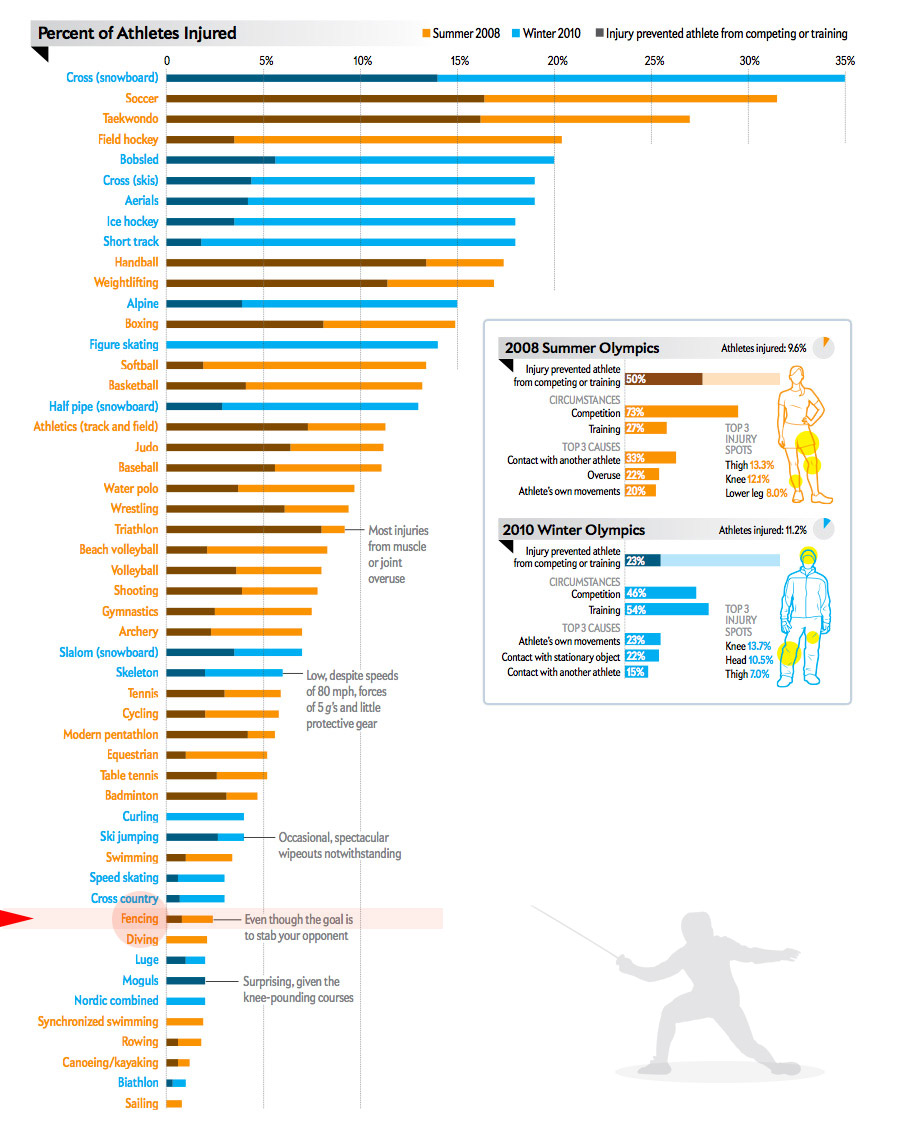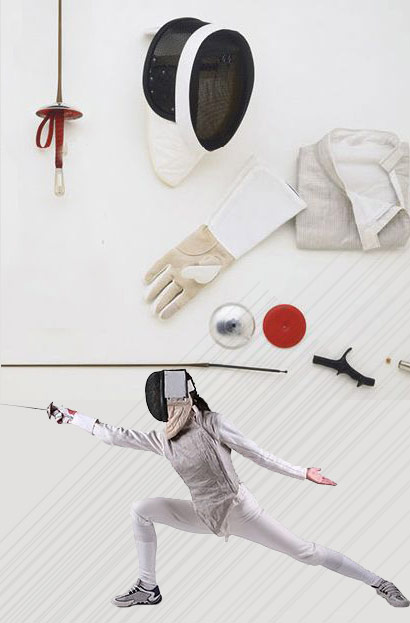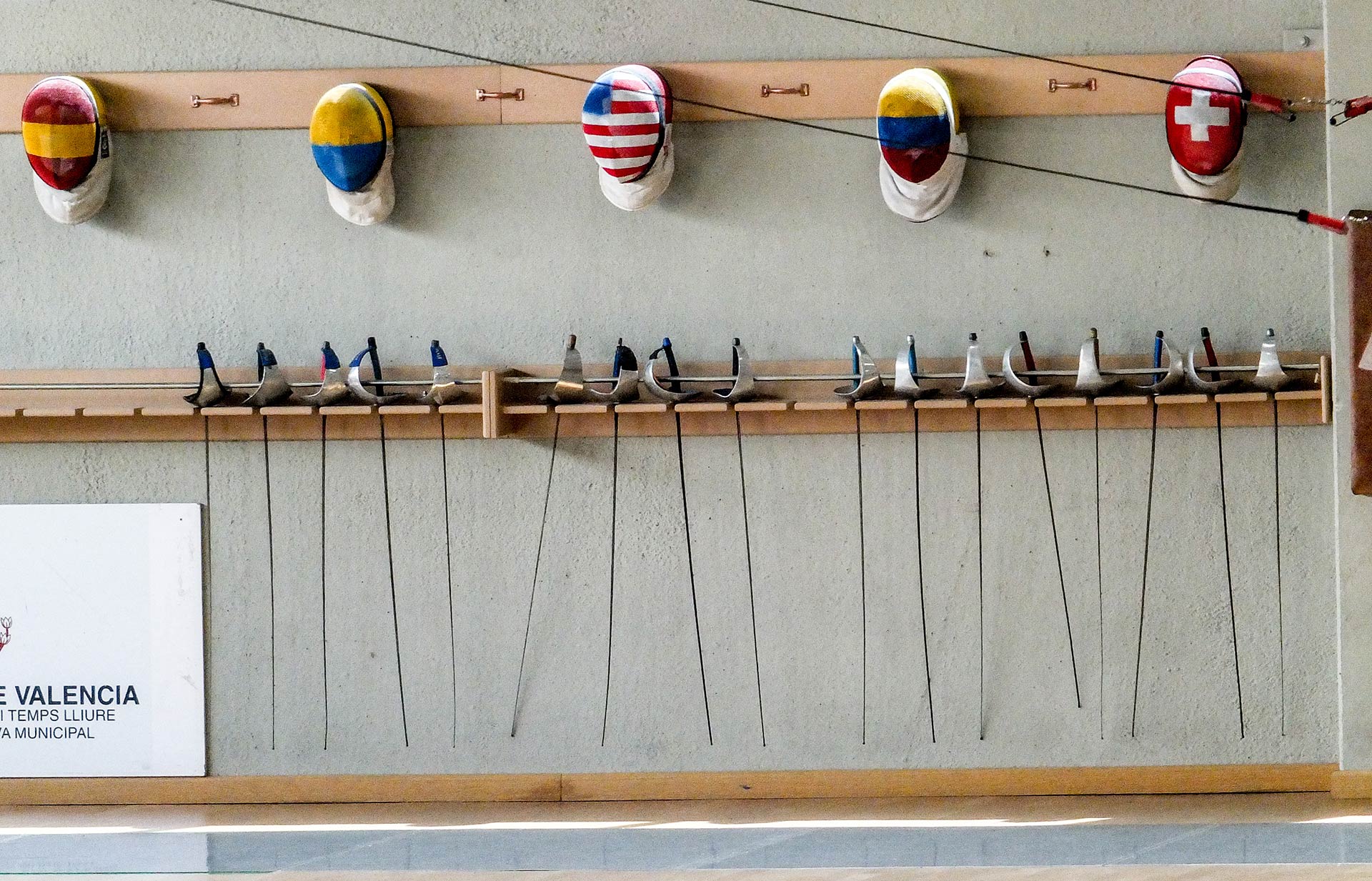Is fencing a dangerous sport?
Although we use “weapons”, fencing is one of the safest sports out there. In the statistics for the injuries of the 2008 (summer) and 2010 (winter) Olympic Games (a study by L. Engebretsen from the Oslo University), fencing is on the 42nd place out of 51, with less injuries than ping pong and swimming. (see the image below). Practicing fencing can cause certain hematomas on the arms or legs, tendinitis if you don’t stretch well, muscle fatigue and the occasional hit on the weapon-free hand. But it is a very safe sport nonetheless.
How fencing is practiced?
Fencing is a combat sport with weapons that simulates a real combat from a sports competition point of view. But it is not a contact sport, such as boxing, martial arts, wrestling, judo and taekwondo. On the contrary, you have to maintain a safe distance at all times in order to avoid being touched.
Initiation fencing is practiced with plastic florets that have a rubber tip on the point and the electric weapons have a spring point.
The head is completely protected by a mask padded on the inside, with mesh which can resist hits of minimum 350 Newtons. The neck is protected by the bib.
The training and competition equipment is manufactured with Kevlar fabric with an excellent resistance to tearing and perforation. Kevlar is a material used for bulletproof vests. So, it is almost impossible that the equipment is penetrated if it is kept in proper conditions.
The foil-wielding hand is protected by an elbow-length leather glove, so that the point cannot penetrate the sleeve.
Falling is rare in fencing and the risks are null since the piste is at ground level.
Fencing is a sport where courtesy and fair play prevail. During a training session without the electric equipment, we expect the fencer to admit that they were touched. All types of bad practices are excluded, among them defending oneself with the free hand, avoiding the hit by closing the distance or not shaking hands at the end of the assault.


